In major museums, only a small fraction of the artifacts held by the museum are on display and interpreted for the public. Most of the museum’s artifacts are in vaults where they are available only to researchers. The Los Angeles County Museum of Natural History maintains a Visible Vault, which changes over time, in which visitors can view hundreds of archaeological artifacts. The Visible Vault includes archaeological treasures from Ancient Latin America.
The Visible Vault
According to the Museum display:
“We have selected some objects to feature on exhibition-quality mounts, but most of the six hundred items are displayed in storage mounts that use archival materials ideal for long-term storage. The white band around some of the artifacts is unbleached cotton twill tape that is often used to secure objects in case of an earthquake. We invite you to explore the selected highlights of this rich collection while taking a rare look at how these objects are cared for behind the scenes.”
Shown below are some of the Aztec and other Mexican figurines which are in the Museum’s Visible Vault.
Figurines
In understanding figurines as works of art, it is important to realize that in Mesoamerican cultures, neither art nor religion were distinct spheres. Writing about Aztec art in The Daily Life of the Aztecs: People of the Sun and Earth, David Carrasco with Scott Sessions report:
“But remember that they understood their world was infused with divine forces that did not originate in human genius, effort, or imagination. Rather, the world of plants, stones, animals, sky, earth, feathers, and humans was created by gods and existed as something like the artwork of gods. The responsibility of humans was to shape their art as a kind of imitation of the gods’ artistic creativity, knowing all the while that they would fall short.”
In Mesoamerica, figurines are found in the form of pottery figurines as well as animal and human figures carved from stone.
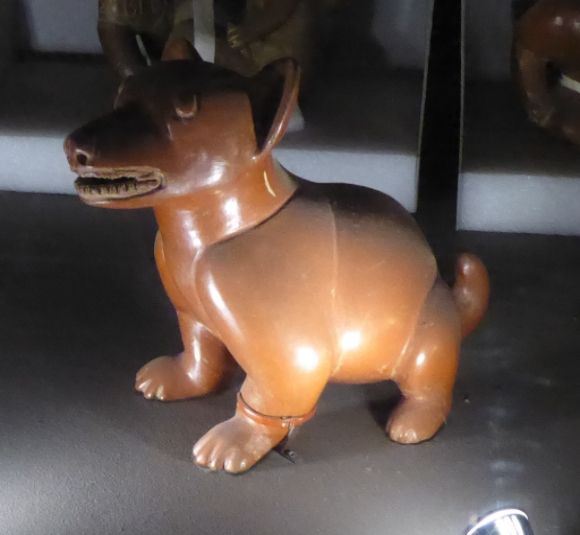 Shown above is a Colima dog effigy. The Colima believed that dogs were emissaries from the God of Death and thus these effigies were often used as funerary offerings.
Shown above is a Colima dog effigy. The Colima believed that dogs were emissaries from the God of Death and thus these effigies were often used as funerary offerings.
Colima is a region on the western Mexican coast. Colima culture flourished from 200 BCE until 500 CE. The Colima artists created large, hollow figurines. Margaret Bunson and Stephen Bunson, in their Encyclopedia of Ancient Mesoamerica, report:
“The statues, especially the dogs, may have had a mortuary function, as they were found in the shaft tombs of the region.”
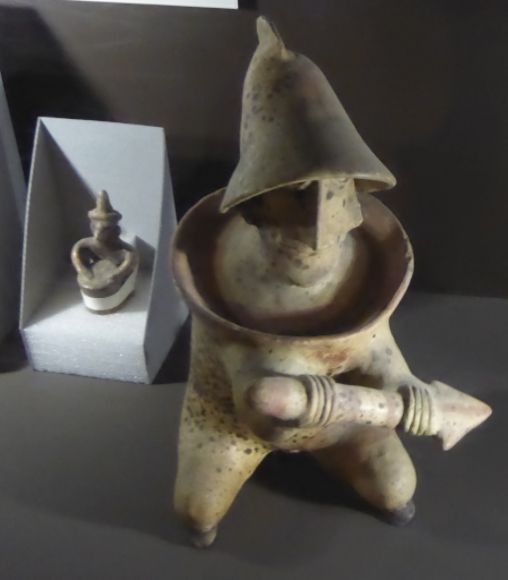 Shown above is a warrior effigy from Jalisco.
Shown above is a warrior effigy from Jalisco.
According to the Museum display:
“The warrior figure is a common subject in the Jalisco culture, suggesting the importance of warfare. This example wears the typically crested warrior’s helmet and stands ready, holding a spear. These types of figures were probably used as burial offerings.”
Jalisco culture flourished in western Mexico from 200 BCE until 500 CE. Margaret Bunson and Stephen Bunson, in their Encyclopedia of Ancient Mesoamerica, report:
“Figurines, usually hollow, depict warriors, chieftains, females (alone or with children) and people wearing conical headdresses. Statuettes, chunky and having stubbed arms and legs, were also produced, some with shoulder pellets (symbolic designs.”
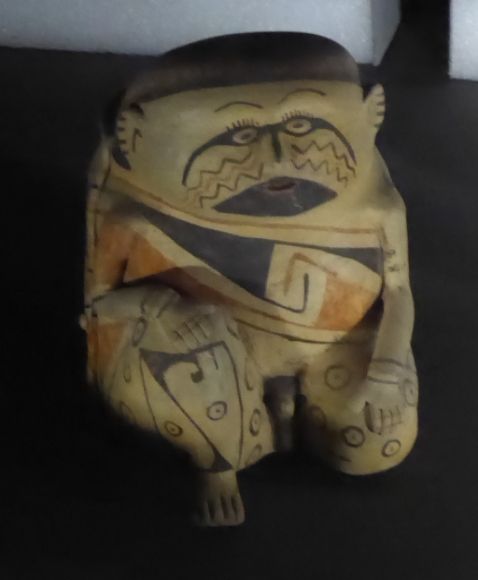 Shown above is a human effigy vessel.
Shown above is a human effigy vessel.
According to the Museum display:
“This polychrome effigy vessel may represent the first stage in a Casas Grandes shaman-priest’s journey into the supernatural world. Shaman-priests are often depicted dancing or smoking to induce the trance that will take them on this journey. The bent knee and geometric designs, perhaps representing tattoos, are typical of these vessels.”
Casas Grandes culture flourished in Chihuahua, Mexico, from 1200 CE to 1450 CE. The most important Casas Grandes site is Paquimé.
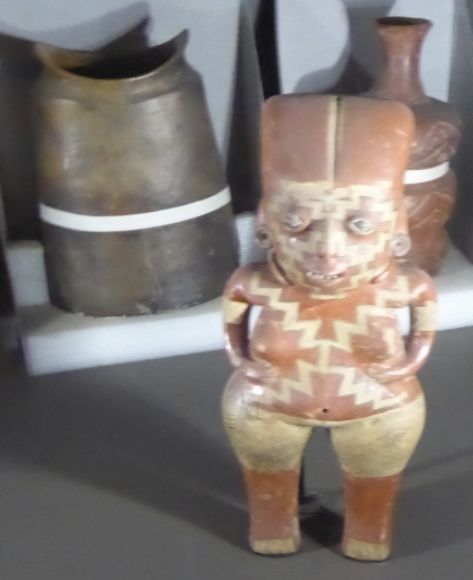 Shown above is a Chupicuaro style female figure which may symbolize fertility and reproduction and may have been associated with female rites of passage.
Shown above is a Chupicuaro style female figure which may symbolize fertility and reproduction and may have been associated with female rites of passage.
Chupicuaro culture flourished in Guanajuato, Mexico, from 300 BCE until 500 CE. Michael Coe and Rex Koontz, in their book Mexico: From the Olmecs to the Aztecs, write:
“Little handmade, clay figurines of the ‘pretty lady’ type were likewise dropped into the graves; these are charming and quite nude, made with slanting eyes and fancy coiffures that were built up from clay strips.”
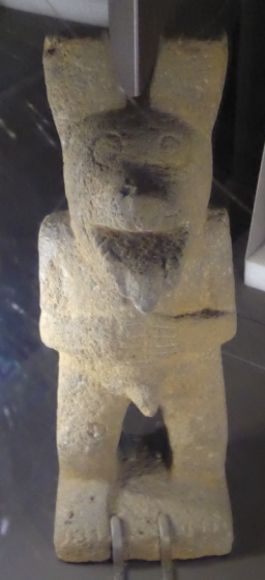 Shown above is a humanized coyote effigy which may depict the Tarascan goddess Xaratanga.
Shown above is a humanized coyote effigy which may depict the Tarascan goddess Xaratanga.
The coyote effigy, carved from basalt, is from the Tarascan culture in Michoacan, Mexico, and flourished from 900 CE until the arrival of the Spanish.
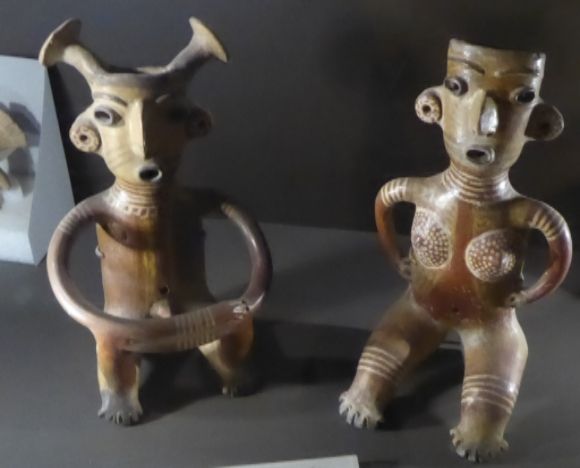 Shown above is a marriage pair.
Shown above is a marriage pair.
According to the Museum display:
“These two figures were discovered at Cerro Encantado in northeastern Jalisco near Zacatecas and probably commemorate a marriage. Male and female pairs are commonly found in burials in western Mexico.”
The Zacatecas style flourished in Jalisco about 100 CE.
 Shown above is a jaguar-baby effigy sculpture from the Olmec culture of 1500 BCE to 300 BCE.
Shown above is a jaguar-baby effigy sculpture from the Olmec culture of 1500 BCE to 300 BCE.
The Olmec, who are also known as Tenocelome (Jaguar-Mouthed People), are known for their use of the jaguar motif. Margaret Bunson and Stephen Bunson, in their Encyclopedia of Ancient Mesoamerica, report:
“Figurines created by the Olmec include the ‘baby’ forms, which portray squat, infantile creatures, carved to represent the fluid, chubby limbs of the young. Their combination of realism with an eerie mystical symbolism is startling. The babies are believed to be linked to the were-jaguar cult of the Olmec and other Mesoamerican cultures. The cult involved the religious worship of half-man, half-jaguar creatures that peopled part of the Olmec spiritual world.”
Michael Coe and Rex Koontz, in their book Mexico: From the Olmecs to the Aztecs, explain the were-jaguar cult:
“The Olmecs may have believed that at some time in the past, a woman cohabited with a jaguar, this union giving rise to a race of were-jaguars, combining the lineaments of felines and men. These monsters are usually shown in Olmec art as somewhat infantile throughout life, with the puffy features of small, fat babies, snarling mouths, toothless gums or long, curved fangs, and even claws. The heads are cleft at the top, perhaps representing some congenital abnormality, but certainly symbolizing the place where corn emerges.”
It is generally thought that the jaguar images found in Olmec and other Mesoamerican cultures is related to shamanism. Charles Phillips, in his book The Complete Illustrated History: Aztec and Maya, writes:
“Jaguar imagery used by Olmec craftsmen is thought to honour the shape-shifting shamans. The jaguar’s furtive behaviour and deadly capacity to hunt in the hours of darkness made it one of the key allies of the shaman in his demanding spirit-journeys. Shamans were said to be able to transform themselves into these majestic creatures during their trances.”
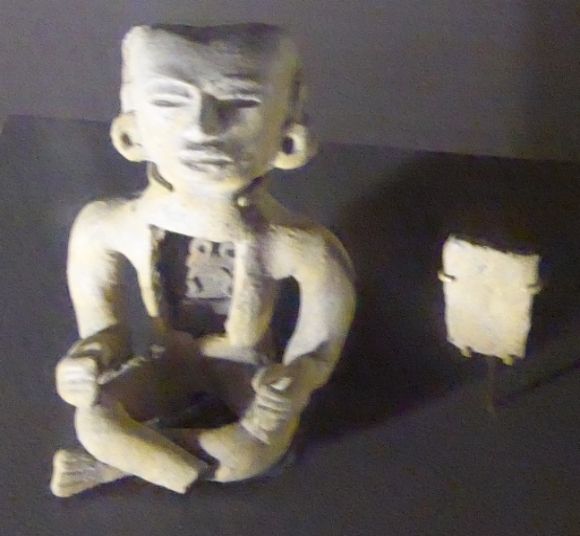 Shown above is an open-chest figure from Teotihucan.
Shown above is an open-chest figure from Teotihucan.
According to the Museum display:
“This two-piece Teotihuacan figure’s chest opens to reveal what lies inside. Some scholars believe it expresses the indigenous idea of the nahual, a ‘double’ that all humans possess into which they can transform. Others think it represents a goddess of the earth who protects fallen warriors.”
More Ancient Mesoamerica
Ancient America: Tlatilco, An Ancient Site in the Valley of Mexico
Ancient America: Tula, the Toltec Capital
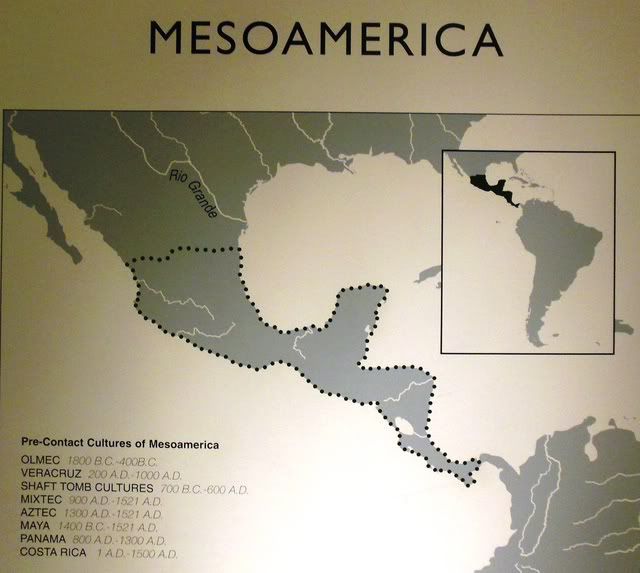
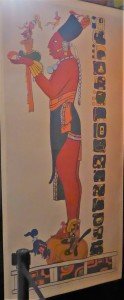
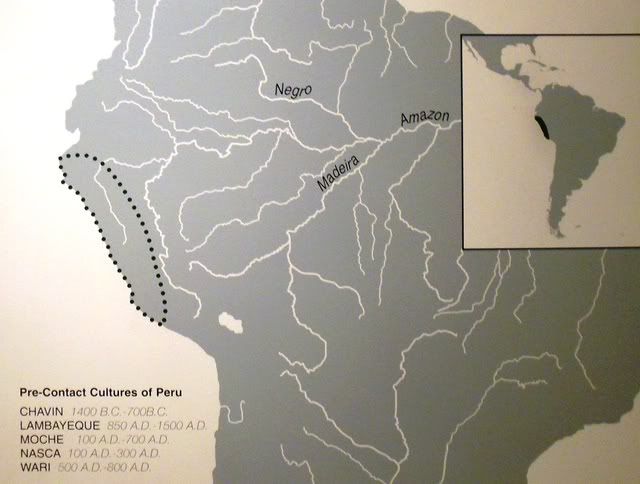
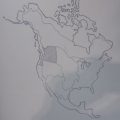
Leave a Reply